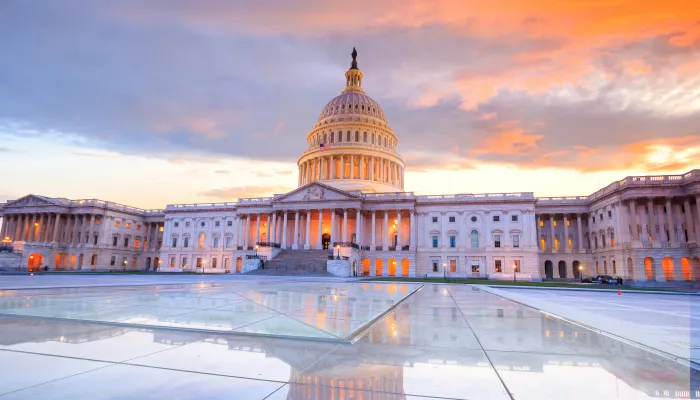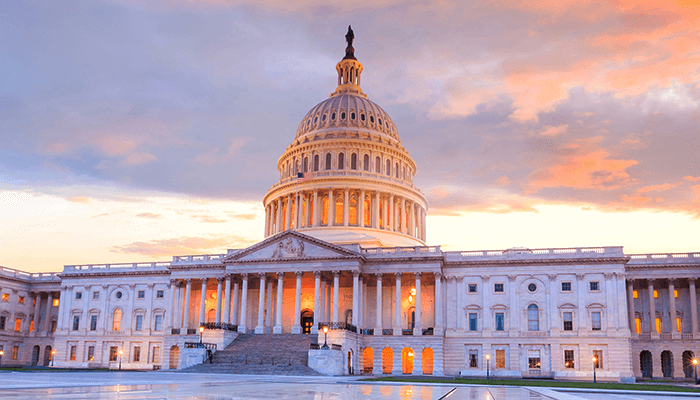Essay: Our Unsustainable Budget Situation
NIHCM Foundation | May 2010
Our Burgeoning Federal Debt
There is little doubt that the United States is on an unsustainable budget path. Budget projections made by the Congressional Budget Office (CBO) have consistently anticipated an explosion in federal non-interest spending, fueled by rapid growth in Medicare, Medicaid and Social Security spending due to rising health care costs and an aging population. The directors of the CBO and the Government Accountability Office, the Social Security and Medicare trustees, and many other budget analysts have been sounding the alarm on this front for years.1 These warnings have not, however, resonated widely with the public or policymakers. Policy inertia has been the rule.
Now, of course, the problem has become much more immediate. The large budget deficits run up during the economic expansion earlier this decade and the even larger deficits used to combat and resulting from the “Great Recession” have the federal debt climbing to uncomfortable territory. Last year, the federal budget deficit was an eye-popping $1.4 trillion, or almost 10 percent of Gross Domestic Product (GDP). While the deficit situation will improve somewhat as the economy rebounds, deficits will still average well over a half-trillion dollars annually for the rest of the decade, adding continually to federal debt. Our country’s debt burden is quickly expected to reach levels not seen since World War II (Figure 1).
CBO projections show the public debt growing from $5.8 trillion in 2008 to $8.8 trillion in 2010 and climbing to $15 trillion in 2020.2 Total debt, which includes what the federal government owes to the Social Security and other trust funds, is expected to grow from roughly $13 trillion in 2010 to almost $21.5 trillion by 2020. These numbers are so large as to be almost unfathomable.
As troubling as this scenario is, it is almost certainly too optimistic since the CBO projections assume current law is adhered to. If the 2001/2003 tax cuts are not allowed to expire for all taxpayers as scheduled at the end of 2010 or if policymakers continue their routine “patching” of the Alternative Minimum Tax so that millions of Americans don’t have to pay the tax, then CBO’s federal revenue projections will be overstated. Likewise, if Congress again steps in to prevent the large drop in Medicare physician fees dictated by the sustainable growth rate formula, federal outlays for Medicare physician payments will be considerably higher than assumed. Discretionary spending also may grow much faster than the rate of inflation assumed by the CBO.
More likely assumptions show the cumulative deficits between 2011 and 2020 will be $12.4 trillion – twice as large as officially projected. Public debt would reach 100 percent of GDP in 2020. Beyond 2020, without changes, the situation would get far worse. CBO’s current law projections are quite bad, but numbers based on more plausible assumptions are devastating.3
The Harm of Excessive Debt
Borrowing money is the natural response to an economic slowdown, and the added government spending can help to offset lower consumer spending and stem job loss. But excessive debt can push up interest rates, slow wage growth, erode living standards, and deprive the nation of the fiscal flexibility to respond to future crises and new national priorities as they arise. More than half of our total debt, and the vast majority of our new debt, is held by foreign investors – giving our foreign creditors increasing leverage over U.S. policy, both domestically and abroad. With the federal debt about to expand dramatically, the risks of doing nothing are unacceptably high for the American taxpayer. We are also laying an exceedingly heavy burden on future generations who will eventually have to pay for today’s borrowing.
The Policy Response to Date
In his FY 2011 budget proposal, the President has proposed that the 2001/2003 tax cuts be allowed to expire for families making over $250,000 a year, a three-year freeze for all non-security discretionary spending, and reducing or eliminating a number of tax preferences. These are all steps in the right direction, but given the magnitude of the challenges we face, they are baby steps at best. New CBO analysis predicts the proposed budget will add $9.8 trillion, or 5.2 percent of GDP, to the national debt over the next 10 years. This projection was produced just before the final passage of the health care reform legislation and incorporates rough rather than precise estimates for the small savings expected from health reform.
The Administration also proposed the goal of having non-interest spending equal to revenue by 2015, which will require reducing deficits to roughly 3 percent of GDP. However, the spending and tax plan in the proposed budget would reduce the deficit only to $752 billion in that year, or 3.9 percent of GDP.4 The Administration is counting on the newly appointed bipartisan Commission on Fiscal Responsibility to trim the deficit by the final 1 percent of GDP, or almost another $200 billion, needed in order to reach its 2015 fiscal target. The panel must issue its recommendations by December 1, 2010. Recommendations require approval by 14 of 18 Commission members, guaranteeing bipartisan support but also setting a high threshold for action.
In addition to the obvious question of whether the Commission will succeed, one can ask whether its fiscal goal is sufficiently aggressive. Their current goal will bring the deficit down quite slowly and still leave the federal debt at close to 70 percent of GDP, well above historical levels.
An Alternative Proposal
In December 2009, the Peterson-Pew Commission on Budget Reform called on policymakers to set a bold yet reasonable goal: stabilize the debt at 60 percent of GDP by 2018.5 Around this same time, three other groups put forth similar proposals, setting debt-to-GDP targets of 60 to 70 per cent and end dates between 2019 and 2022.6 The Peterson-Pew Commission adopted a six-step plan to return the nation to fiscal health:
Commit immediately to stabilize the debt at 60 percent of GDP by 2018. A credible commitment now to stabilize public debt over the medium term can help to reassure our creditors and financial markets. The 60 percent debt threshold is both reasonable and consistent with international standards identified by the European Union and the International Monetary Fund. A more ambitious target could easily prove too difficult for lawmakers to accept and strains credibility. A less aggressive target might be insufficient to reassure markets.
Develop a specific and credible debt stabilization package in 2010. Congress and the White House must then quickly agree on the necessary reforms – almost certainly a mix of spending cuts and tax increases – and the timing for implementing them. Achieving the stated debt reduction goal will require average deficits of 2 percent over the implementation period, but the changes can start more gradually to avoid stalling the economic recovery.
Begin to phase in policy changes in 2012. The timeline for implementing agreed-upon changes must balance the risk of unduly aggressive changes that hamper recovery against delays that undermine the plan’s credibility and needlessly perpetuate high deficits. While the Commission currently believes economic conditions will favor new policies in 2012, policy makers need to watch conditions closely to determine exactly when to start making changes.
Review progress annually and implement an enforcement regime. Once a plan is adopted, we need a mechanism to ensure that it stays on track. The Commission recommends automatic triggering of spending cuts and tax increases any time an annual debt target is missed. This “debt trigger” should be punitive enough that lawmakers are encouraged to be fiscally responsible but not so large that they would try to override it if targets are missed.
Stabilize the debt by 2018. Reducing the debt to 60 percent of GDP will require a dramatic deviation from the current debt path. While the task will be much easier if we stick to current policy and do not extend expiring tax cuts without paying for them, significant structural changes to the budget will be needed regardless.
Continue to reduce the debt as a share of the economy over the longer-term. As we move to a longer-term perspective we will have to find ways to reduce the debt even below the midterm target of 60 percent of GDP. A more reasonable long-term target is something closer to the U.S. historical fifty-year average of less than 40 percent. Debts at this level would give the federal government the fiscal flexibility to respond to unexpected events such as the economic crisis we just experienced.
Moving Boldly Forward
Policymakers face an immensely difficult and unpalatable task. But as daunting as it will be to develop a plan to put the debt on a sustainable course, there simply is no other option. Action to set the changes in motion must begin right away.
The biggest factor in whether our country will succeed is political will – leaders will need to act together and courageously make very tough choices. Promises to not raise certain taxes or reduce certain benefits only stand in the way of bringing politicians together to develop a realistic plan. Any meaningful effort to address the budget problems will have to be bipartisan, giving both parties political cover and reinforcing the collective will to act. Our debt should not be our destiny. The time to act is now.
1 See, for example, Walker, DM. “Facing Up to America’s Health Care Challenge,” NIHCM Expert Voices essay series. 2008. https://www.nihcm.org/ publications/expert_voices
2 Congressional Budget Office. “The Budget and Eco - nomic Outlook: Fiscal Years 2010 to 2020,” 2010.
3 Committee for a Responsible Federal Budget. “CRFB Analysis of CBO’s January 2010 Baseline,” 2010. https://crfb.org/document/crfb-analysis-cbo%E2% 80%99s-january-2010-baseline
4 Budget of the United States Government, Fiscal Year 2011, https://www.whitehouse.gov/omb/budget/Overview/
5 Peterson-Pew Commission on Budget Reform. “Red Ink Rising, A Call to Action to Stem the Mounting Federal Debt,” 2009. https://budgetreform.org/sites/default/files/ Red_Ink_Rising_hyperlinked.pdf
6 Committee on the Fiscal Future of the US. “Choosing the Nation’s Fiscal Future,” 2010; Center for American Progress. “A Path to Balance,” 2009; and Center on Budget and Policy Priorities. “The Right Target: Stabilize the Federal Debt,” 2010.

